- About us
- Support the Gallery
- Venue hire
- Publications
- Research library
- Organisation chart
- Employment
- Contact us
- Make a booking
- Onsite programs
- Online programs
- School visit information
- Learning resources
- Little Darlings
- Professional learning
Sir Sidney Nolan AC OM CBE (1917–1992) was one of the most original and inventive Australian artists of the postwar decades, and one of few Australian artists to achieve an international reputation in the twentieth century. Born in Melbourne, Nolan studied at the National Gallery of Victoria's School of Art in 1934 and 1936. Beginning his career as a commercial artist in the 1930s, from 1938 he became associated with the modernist art patrons John and Sunday Reed at their homestead, Heide, in Heidelberg, Victoria. Nolan mounted his first solo exhibition in 1940, and two years later was conscripted into the army, serving as an army storeman in the Wimmera. Between 1946 and 1947 he made the enormously complex series of paintings of Ned Kelly for which he is best known. From 1951 Nolan lived abroad, but returned to Australia at regular intervals. He continued to explore Australian themes and landscapes in paintings of Burke and Wills, Eliza Fraser, Gallipoli and the Eureka rebellion, and in his huge masterpiece Riverbend (1965). Knighted in 1981, Nolan was awarded the Order of Merit in 1983. He was also made a Companion of the Order of Australia, elected an honorary member of the American Academy of Arts and Letters and a member of The Royal Academy of Arts. A major exhibition of Nolan's work, Sidney Nolan: A New Retrospective, held at the Art Gallery of NSW and the National Gallery of Victoria in 2007–2008, brought together more than 100 of his works.
Patrick White (1912–1990), acknowledged as Australia’s pre-eminent novelist of the 20th century, was awarded the Nobel Prize for Literature in 1973 for The Eye of the Storm, ‘for an epic and psychological narrative art which has introduced a new continent into literature’. He established the Patrick White Award, an annual literary prize, with his Nobel Prize funds.
White was born in London to a family of Hunter River graziers and spent his youth between England and Australia, at one point returning from study abroad to work as a jackaroo. At Kings College Cambridge he studied French and German languages and literature; the experience of the Australian landscape and European literature and thought were to become major sources of influence in White’s writing.
After a spell as an intelligence officer in North Africa during the Second World War, he returned to Australian with his partner, Manoly Lascaris. The two men were partners for fifty years, while White’s friendships with many others were turbulent and often cruelly curtailed.
White’s novels include The Aunt’s Story, The Tree of Man, Voss, Riders in the Chariot, The Vivisector, The Eye of the Storm and The Twyborn Affair. During the 1970s, becoming increasingly depressed at Australians’ complacency and superficiality, White spoke out on various political issues. David Marr’s superb biography of White was published in 1991. In 2012, the centenary of White’s birth was celebrated with a new publication of his first novel Happy Valley and the publication of an unfinished work, Hanging Garden.
Collection: National Portrait Gallery
Purchased 1999
© Robert McFarlane/Copyright Agency, 2024
Robert McFarlane (age 22 in 1964)
Sidney Nolan (age 47 in 1964)
Patrick White (age 52 in 1964)



On one level The Companion talks about the most famous and frontline Australians, but on another it tells us about ourselves.
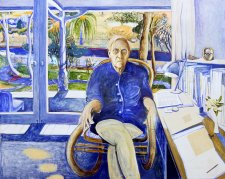
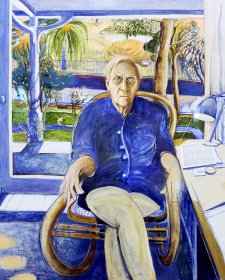
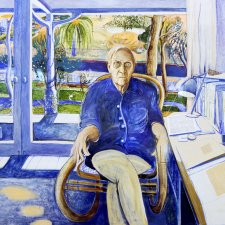
Sarah Engledow describes the fall-out once Brett Whiteley stuck Patrick White’s list of his loves and hates onto his great portrait of the writer.
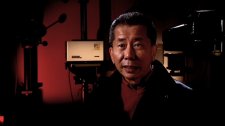
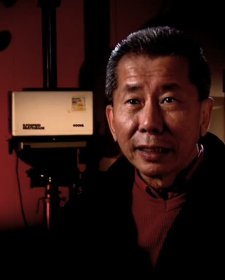
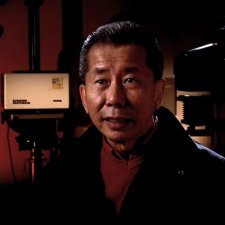
An interview with photographer William Yang who recalls his encounters with the author Patrick White.